Cusco And The Boleto Turistico (Tourist Ticket)
Is the boleto turistico, Cusco’s combined ticket to over a dozen sites, worth it? How about if you have limited time in the city? Let me tell you about my experiences cramming in some of the more central sites over the course of a single day.
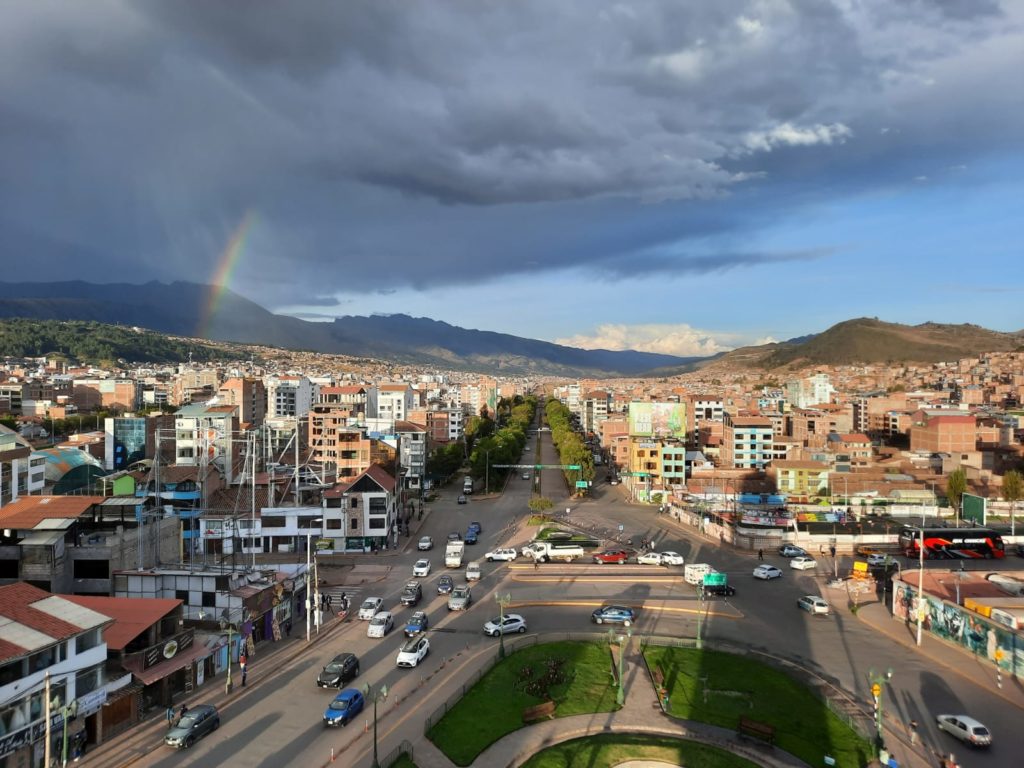
The Boleto Turistico
I touched a little bit on the boleto turistico (tourist ticket) in my last post, a city guide to Cusco. It’s one of those schemes where a municipality, group of museums or similar collective of cultural institutions sells combined tickets to several institutions at once. Sometimes this can be great value for a visitor, if the visitor was planning to visit most or all of the individual institutions. More often, I see it as a way to increase funding and also increase visitor numbers to some of the less popular or less well-known sites.
The boleto turistico in Cusco costs 130 soles (cash only) and lasts for 10 days. You can visit 16 sites (or maybe 15 – we’ll get to that). Several of them are archaeological sites near Cusco or in the Sacred Valley. And the remainder are museums and other sites in Cusco itself.
When I was doing my research before my trip, I found a few posts (like this one) where people had been to most or all of the sites and reviewed them. But what if you don’t have time for that? I was on a G Adventures tour in Peru. This meant my time in Cusco was pretty brief. I had a couple of hours one day between arriving in Cusco and going for a briefing at the G Adventures office. And then a full day after my Inca Trail hike and before heading to Puerto Maldonado and the Tambopata Eco Lodge. Up until that morning I hadn’t made up my mind if I was going for the boleto turistico or not.
Is The Boleto Turistico Right For Me?
Firstly, and especially if you have limited time, this will come down to cost. If you’re a backpacker 130 soles (almost £30) could be too much for entry tickets. If this is a one-off trip you’re willing to splurge on, it could be fine. Secondly it will come down to whether any of the sites on the lists are ones you are set on seeing. And this is where the rules of the boleto turistico get interesting.
There are multiple options for the boleto turistico, and even more for some of the individual sites. You can buy the full ticket for 130 soles. Or there are three ‘partial’ tickets for 70 soles each. One of them covers the four archaeological sites closest to Cusco. Another covers those further out in the Sacred Valley. And the third covers the rest. When you break it down to individual attractions, some of them can be visited without the tourist ticket. Others cannot – the boleto turistico is the only way of getting in.
I made my decision to get the full boleto turistico when I arrived at the ticket office at Saqsaywaman. I figured I wanted to see at least this site and the Museo de Sitio Qorikancha, so the partial tickets weren’t an option and I would just go to one or two other things to make it worthwhile. So I bought my ticket. And the nice lady proceeded to cross off the Museo de Sitio Qorikancha. It was closed.
Instead of feeling annoyed (OK I was, just a little) this created a new resolve. I was going to see how much value I could get out of the boleto turistico in a single day. Without overdoing it. And while still going to see a couple of other sites I wanted to see. In the end I was fairly happy with the results – for me the boleto turistico wasn’t great value, but it wasn’t terrible. The main lesson you can learn from my experience, though, is to check that any key sites are actually open before you make up your own mind.
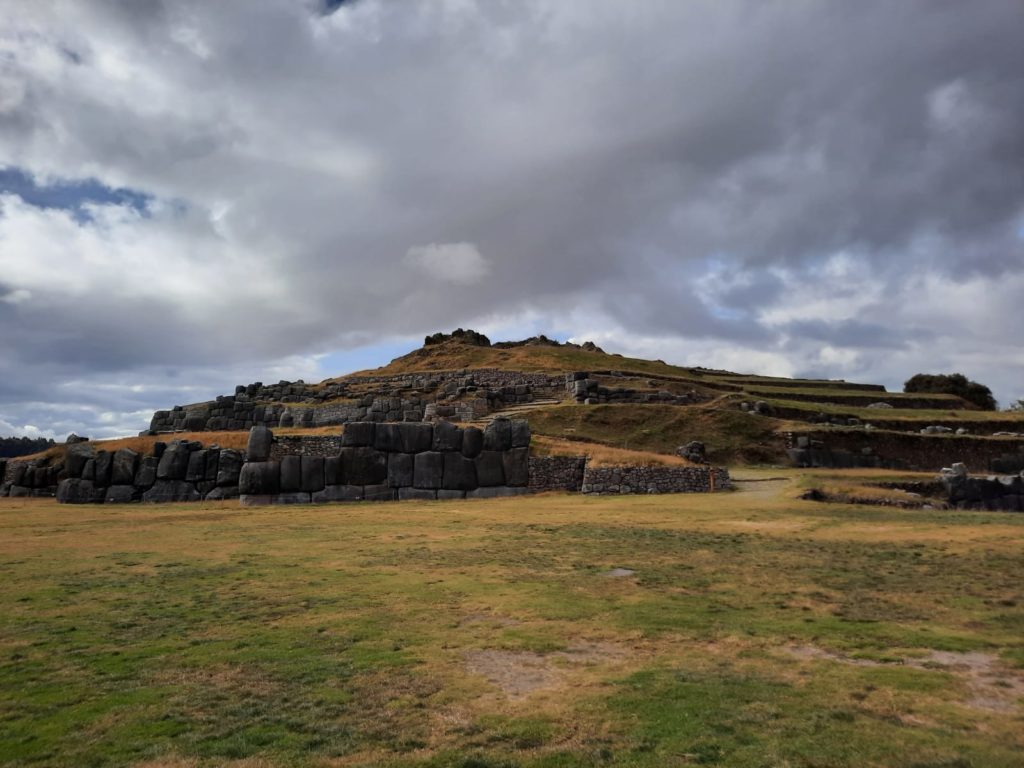

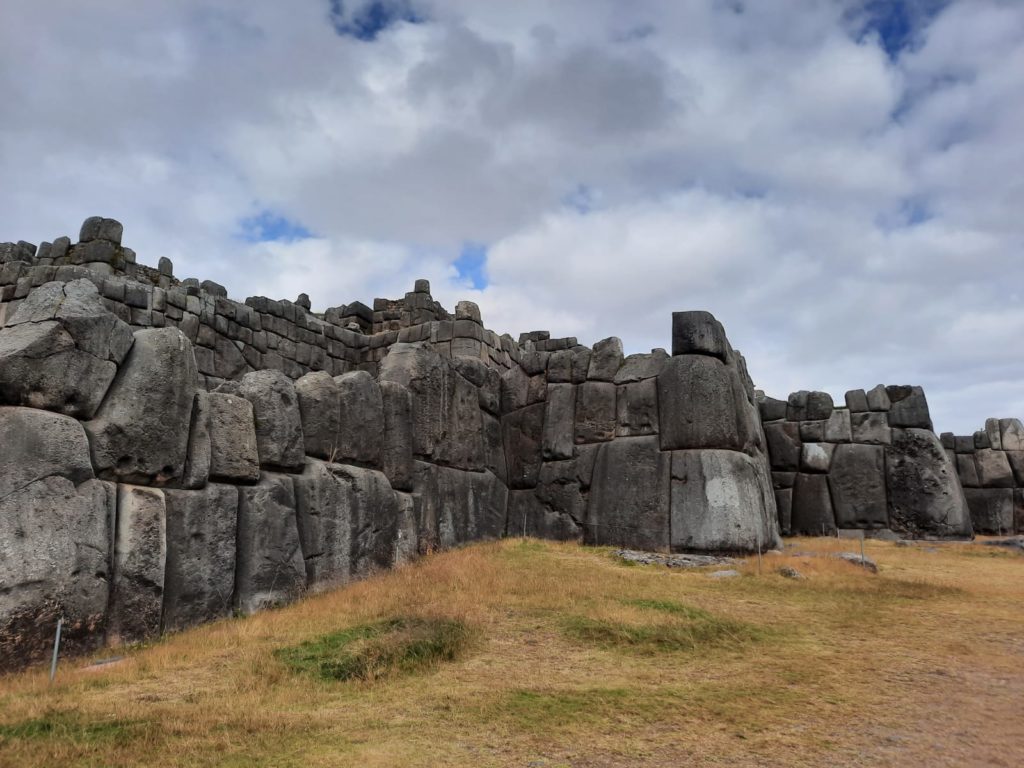
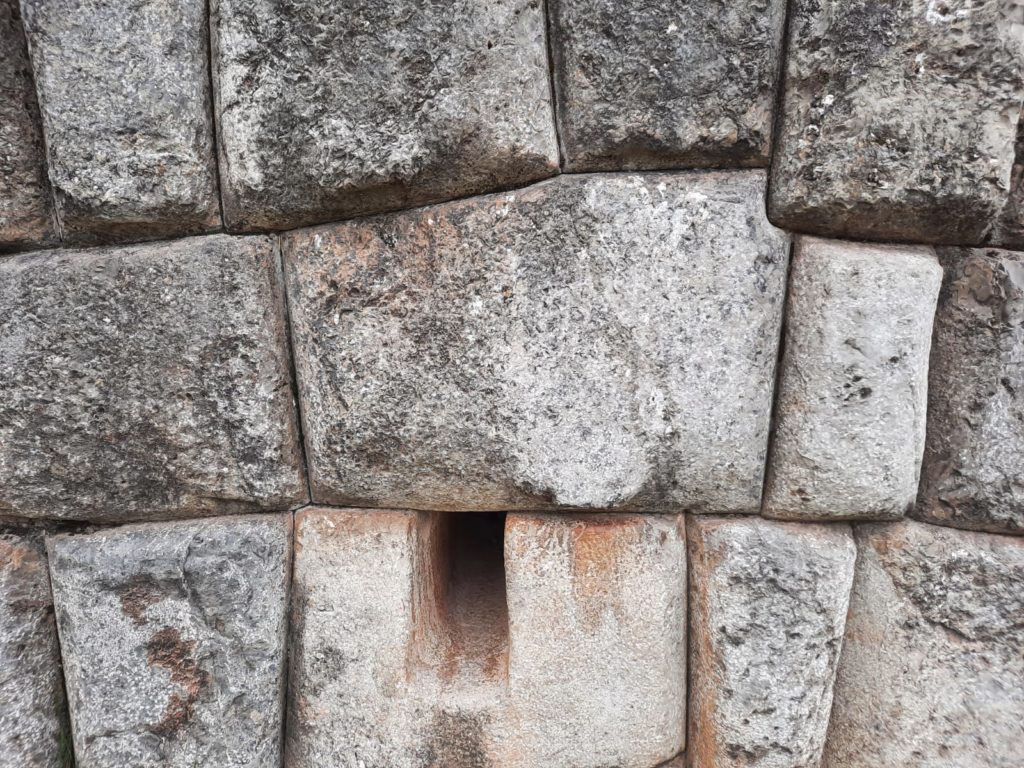
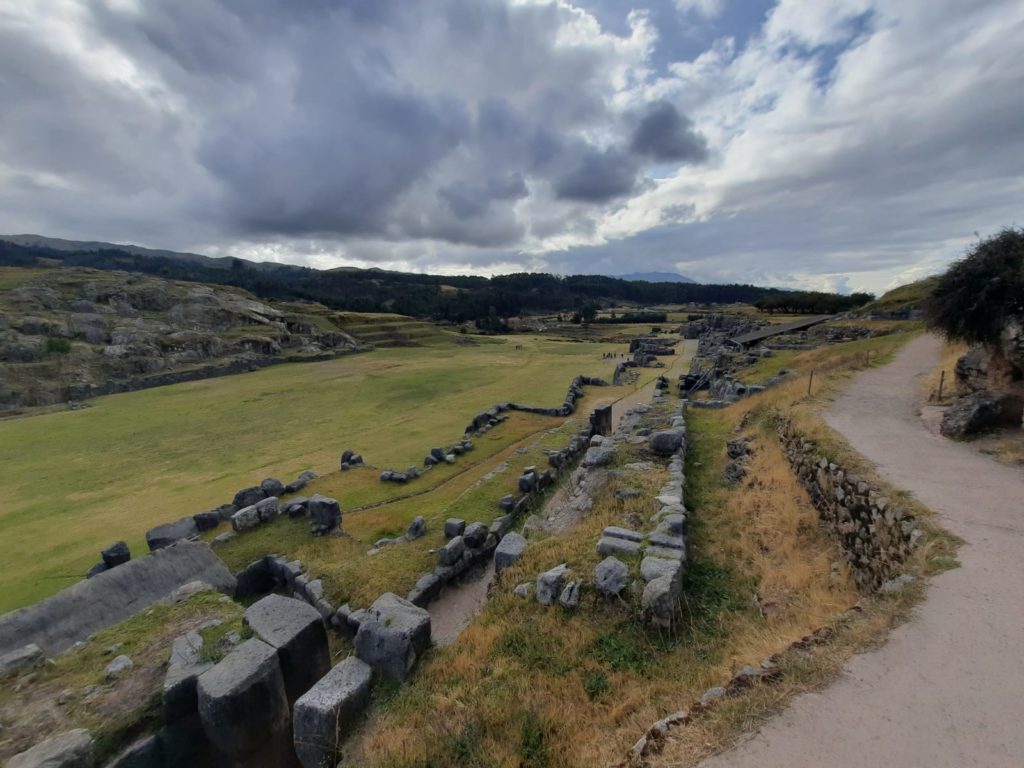

Saqsaywaman
So as I said above, the first site I saw on the boleto turistico was Saqsaywaman (a brief note on spelling: Quechua place names have a colourful variety of possible spellings. I’ve stuck with the ones the boleto turistico uses). Saqsaywaman is an Inca site, just above the city. There is actually a lookout nearby where you can see a bit of the site (if you want to do things on the cheap). I had been here with my tour group on the way to the Sacred Valley, but wanted to see more.
Saqsaywaman was a temple or sanctuary. If you are into the theory that Cusco was built in the shape of a puma, then Saqsaywaman is the head. It’s high enough above the city that you get great views, and also for it to have been used as a fort by Manco Inca as he fought desperately to oust the Spanish forces from Cusco. There is beautiful, top quality stonework here: the zig zag walls are particularly impressive.
I enjoyed wandering around Saqsaywaman, but this is probably one place where I should have taken up the offer of the guides touting for business at the entrance. It would have come to life for me a little more with someone to explain what I was seeing.
Saqsaywaman is open early (I was here at 8am) – a good tip if you’re looking to drive value from your boleto turistico! I also found that it was possible to get an Uber up to Saqsaywaman, but not back down. So either plan ahead, or be prepared to walk back down a number of steps into town.
Would I have visited without the boleto turistico? Yes
Sacsayhuaman, Capital of the Inca Empire (cuscoperu.com)
Do I recommend it? Yes
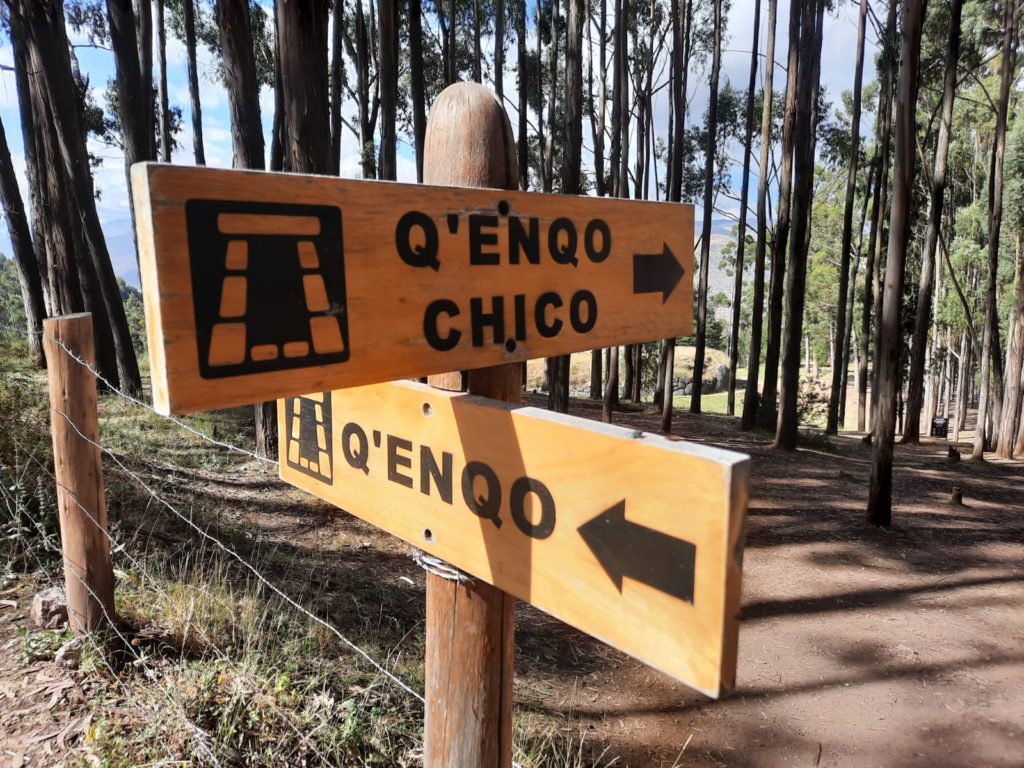
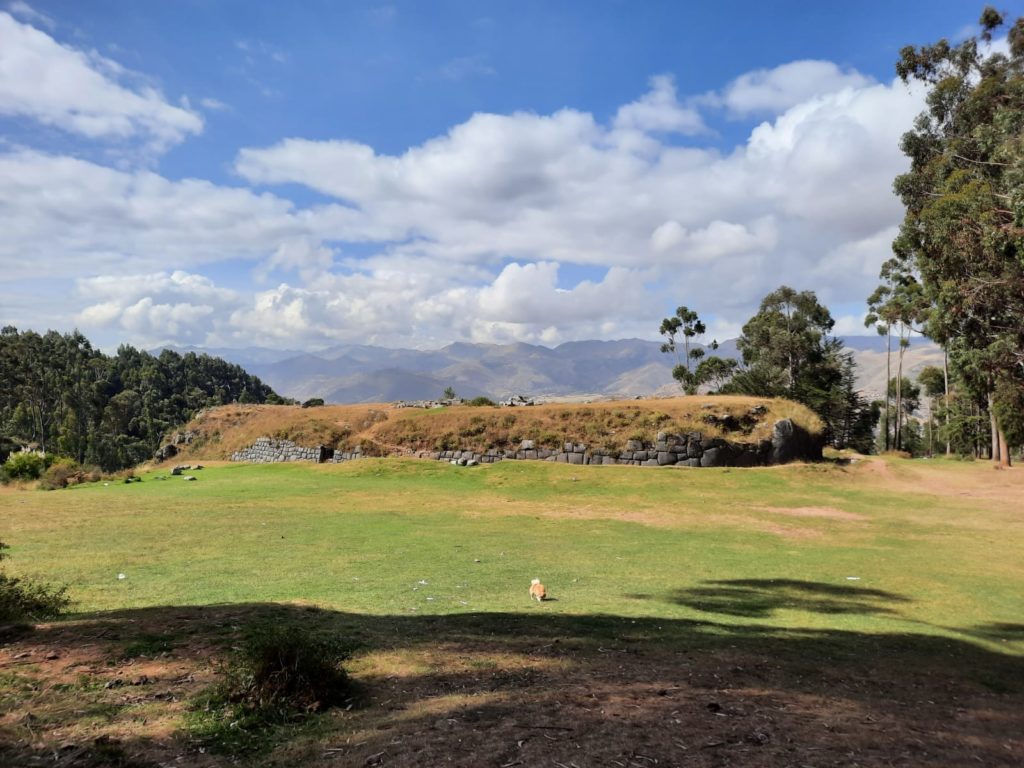
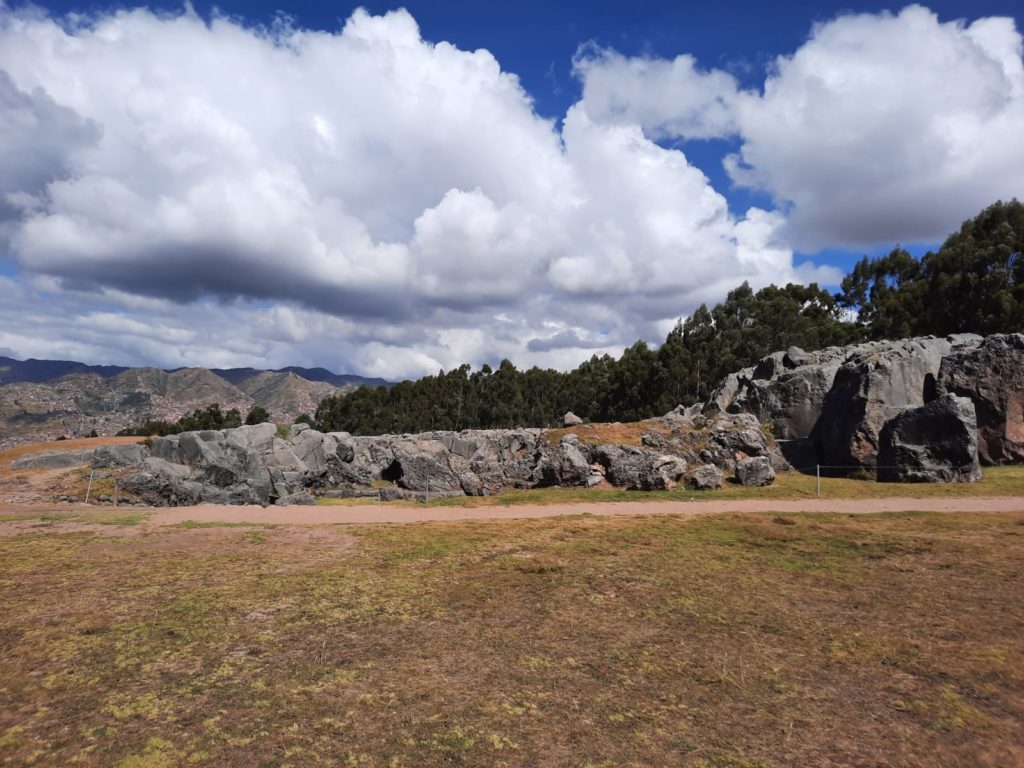
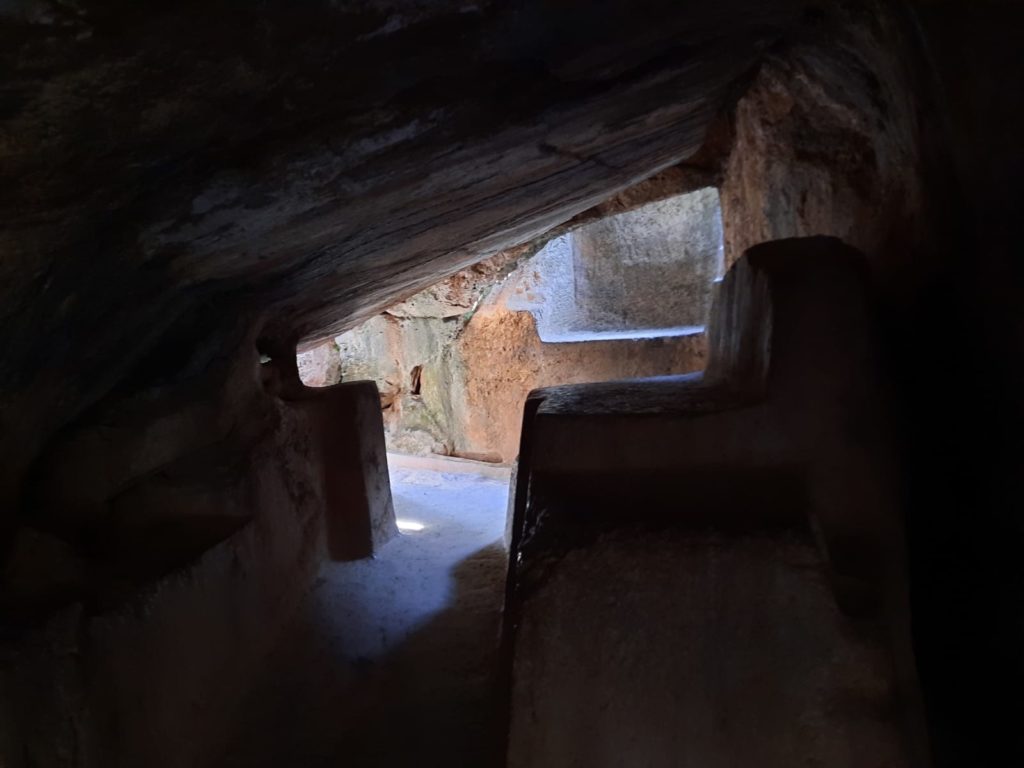

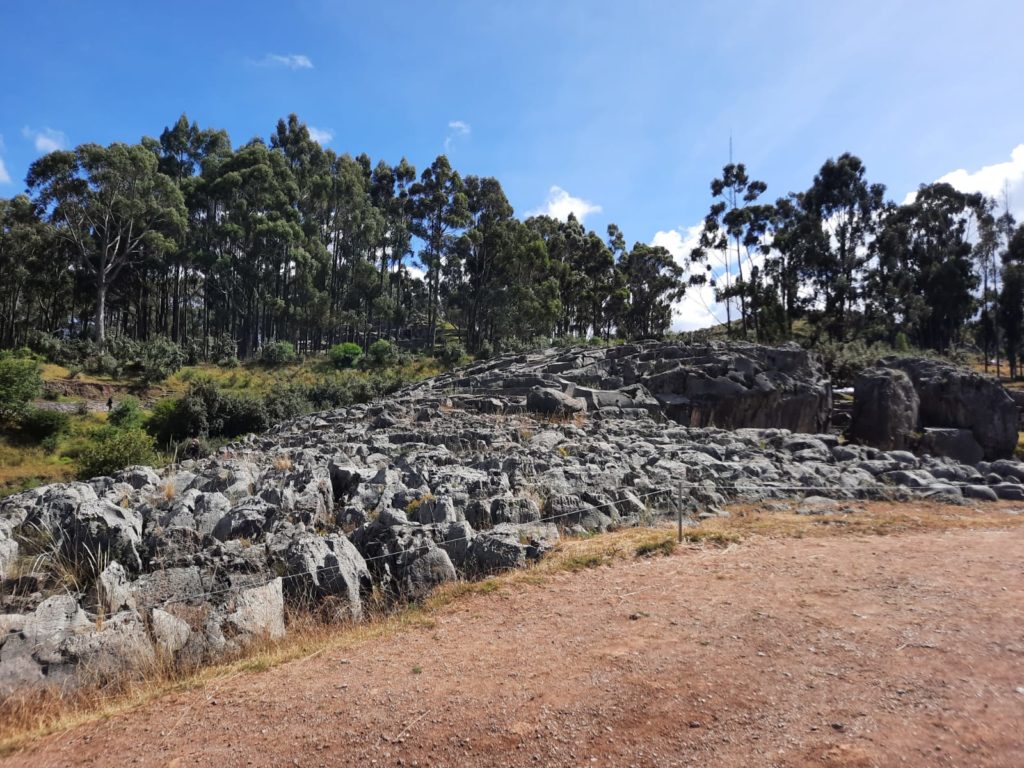
Q’enqo
Given that I was now all about driving value from my tourist ticket, once I was done at Saqsaywaman I decided to walk a few minutes further along to get to Q’enqo. There were other archaeological sites even further out, but I was wary of not being able to get back (and also of various warnings I’d read about muggings when travelling solo). So Q’enqo it was.
Q’enqo is unlike any other archaeological sites I saw in Peru. It’s a limestone outcrop, inside which is a ritual space. There are various carvings on the outside of the rock, some of which you can’t now see because it’s forbidden to climb on top of the site. There is a central chamber, and channels cut into the rock, probably used for chicha and/or animal blood from sacrifices. The underground chambers, according to chroniclers, were once covered in gold. Moonlight would penetrate through a small hole, illuminating the rituals within.
I really enjoyed Q’enqo because it was so unexpected and different. It reminded me of a mithraeum; there’s something primal and visceral about rituals that take place underground. As well as the main site there is Q’enqo Chico (Little Q’enqo) next to it. This one isn’t so impressive but you will walk past it on the way from Saqsayqaman so can detour to take a closer look.
Would I have visited without the boleto turistico? No
Do I recommend it? Yes!
Qenqo Archaeological Complex (cuscoperu.com)
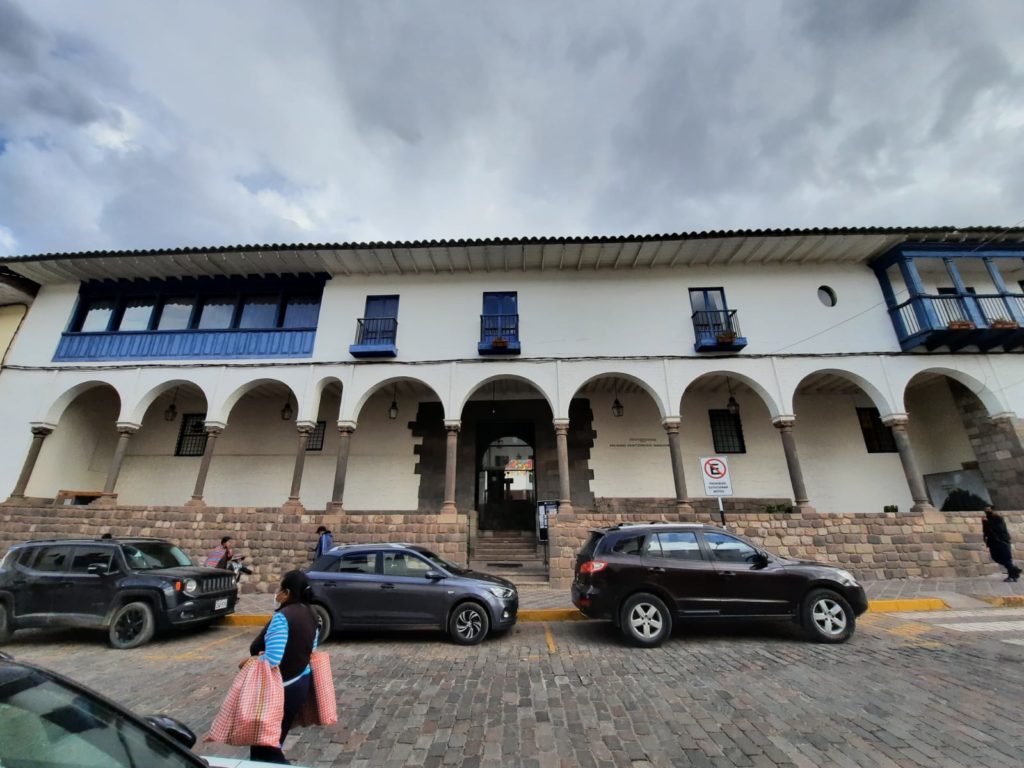
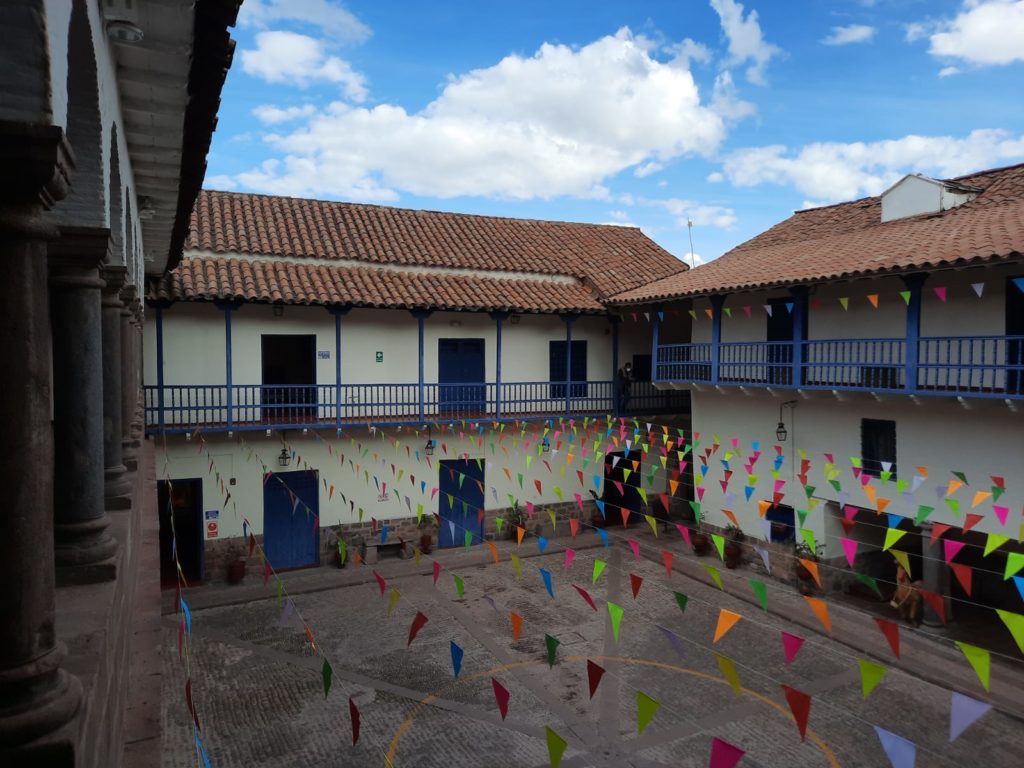
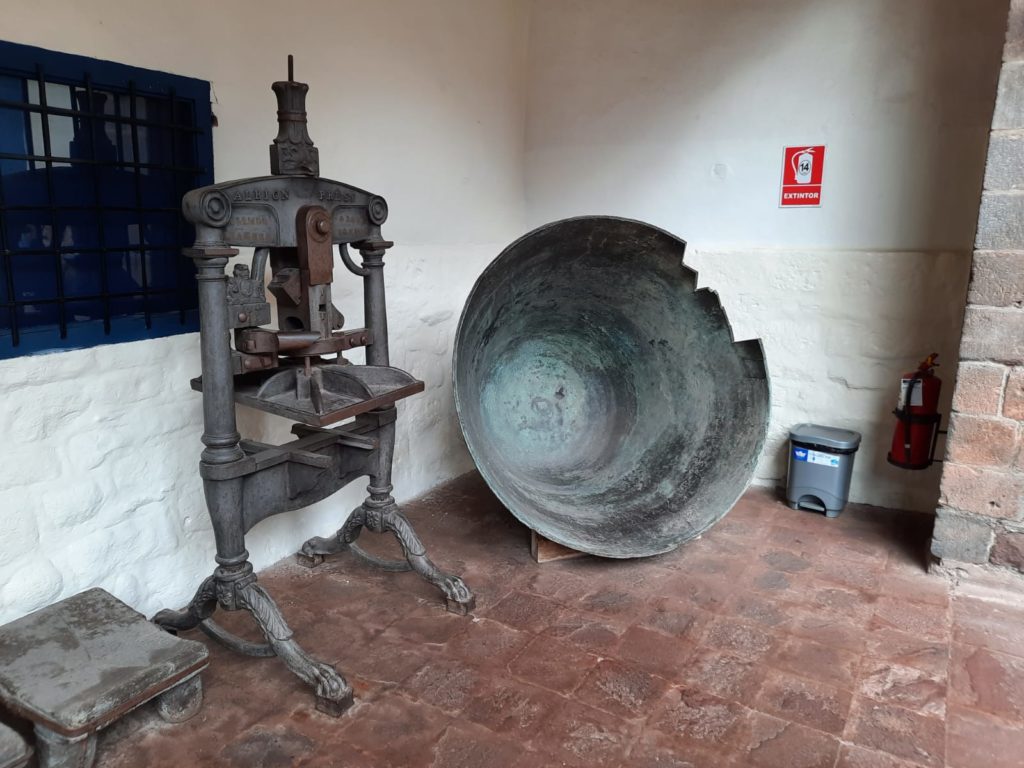
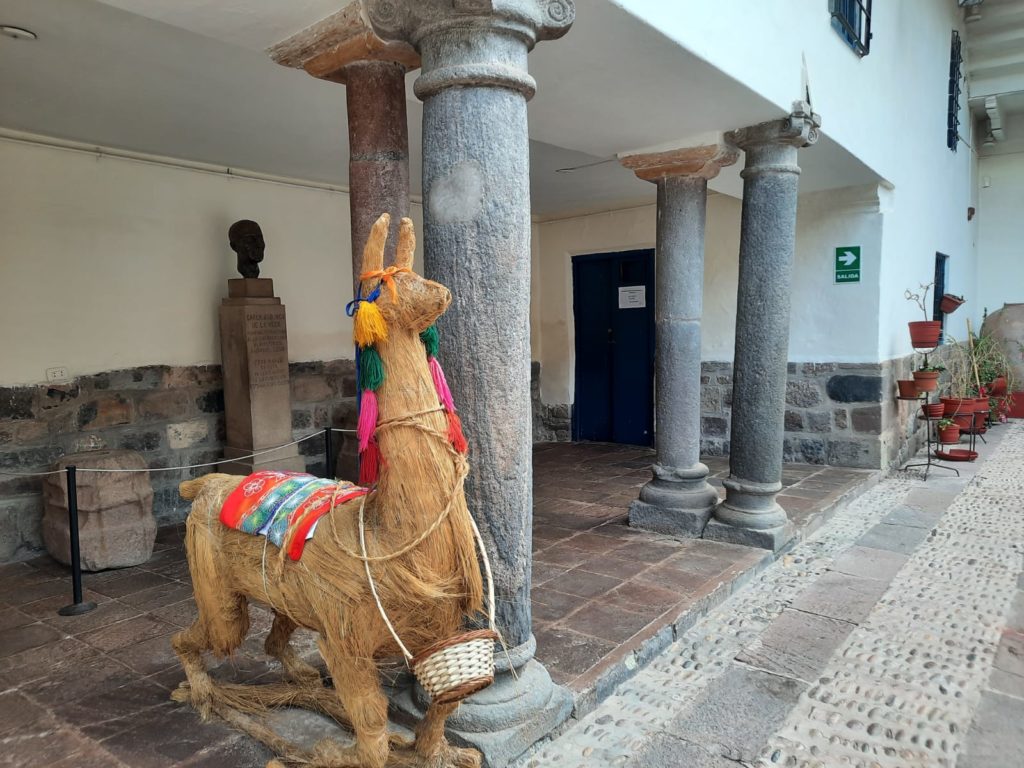
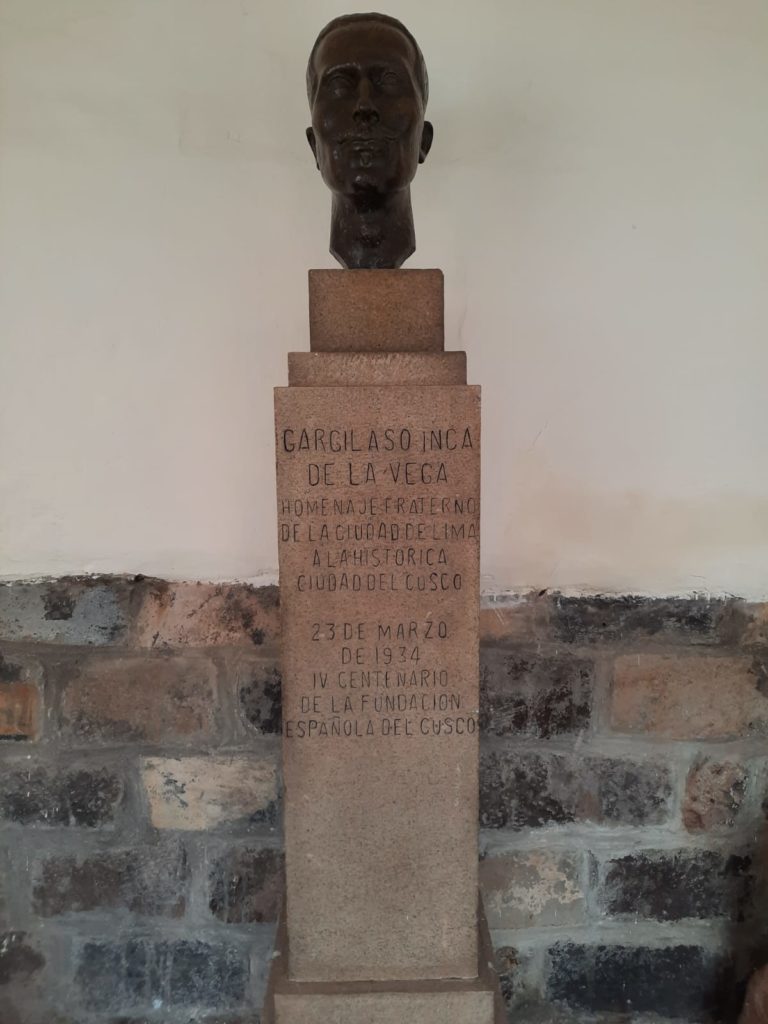
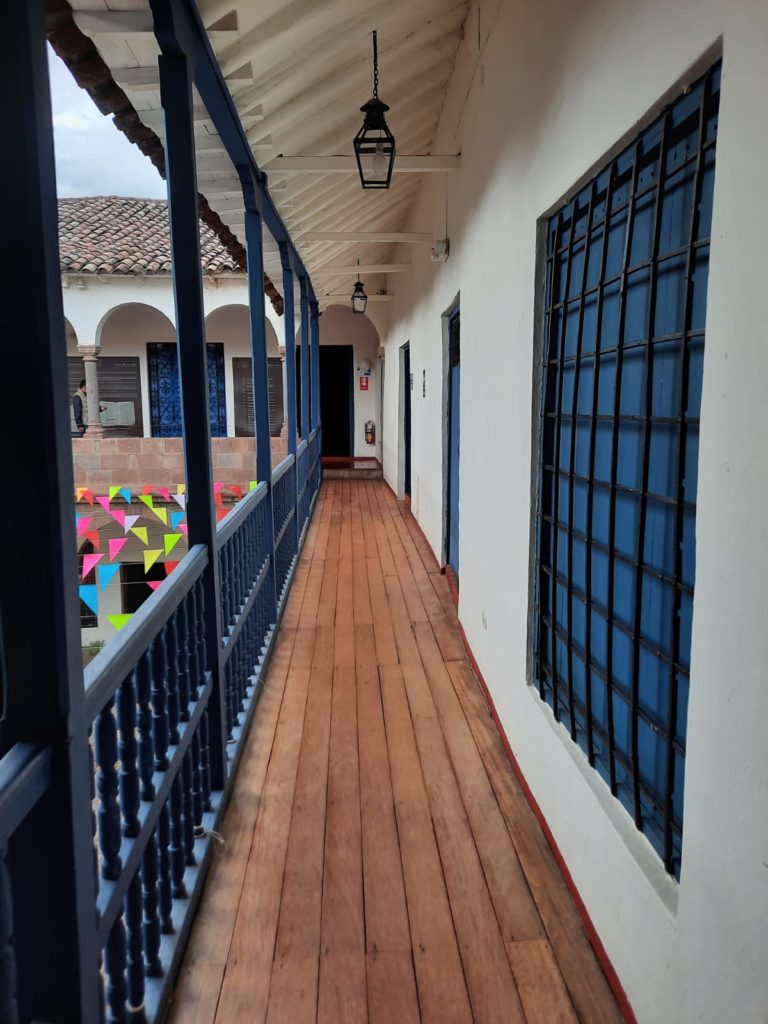
Museo Histórico Regional (Regional History Museum)
So after Q’enqo I walked back down into the city, visited the Qorikancha and the cathedral, and stopped for a quick lunch. This is what I mean when I say that I took my time and didn’t devote myself solely to the boleto turistico for the day. Refreshed and refuelled, I was ready for the Museo Histórico Regional, also known as the Casa Garcilaso. This is one of the sites where there is no way to enter without a boleto turistico.
I was mainly interested in visiting this museum because I find Garcilaso de la Vega (also known as Inca Garcilaso de la Vega) an intriguing figure. Born in 1539 with mixed Inca and Spanish heritage, he was a historian and chronicler. His version of Inca history was not without its biases, but was hugely influential and remains an important source of information about life before the Spanish Conquest. This was his home (although reduced to rubble and rebuilt after an earthquake in 1986), and there is plenty of information about his life and writings on the first floor.
As for the rest of the museum, it was a pleasant surprise. It’s just a shame they have a no photo policy so I can only show you images of the exterior. There were interesting displays on local geography, flora and fauna, past cultures, and more recent history. Something that is common in Cusco’s museums (and can be seen here) is the use of illustrations from Garcilaso de la Vega’s chronicle to support different points. For example an explanation of the conversion of the Quechua people uses an illustration of an early church service.
In my book this was a pleasant and surprisingly good museum (and I don’t think this was just the lunchtime cocktail talking).
Would I have visited without the boleto turistico? Yes (if this was an option)
Do I recommend it? Yes – for history/museum lovers
House Of The Inca Garcilaso de La Vega – CuscoPeru.com
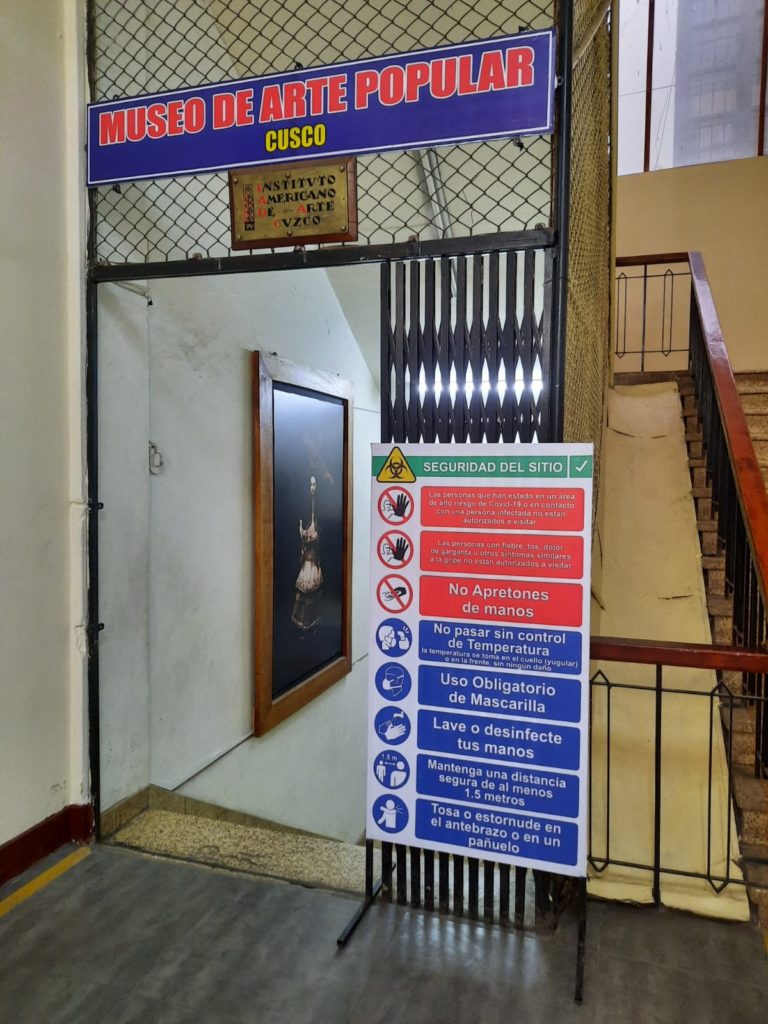

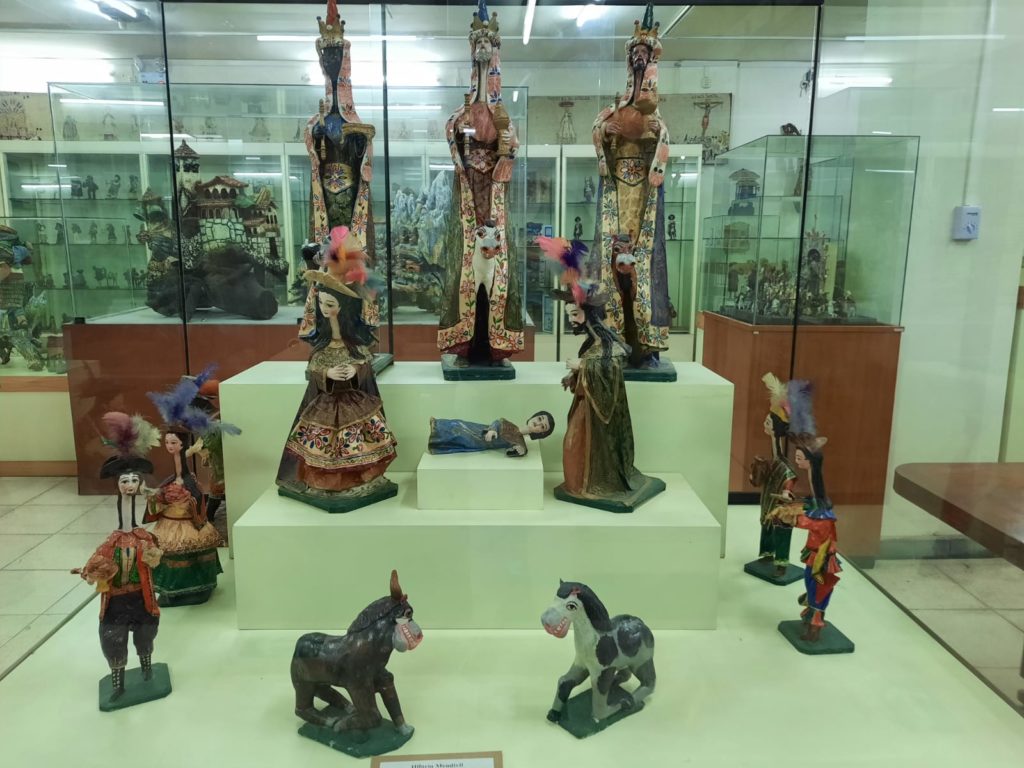
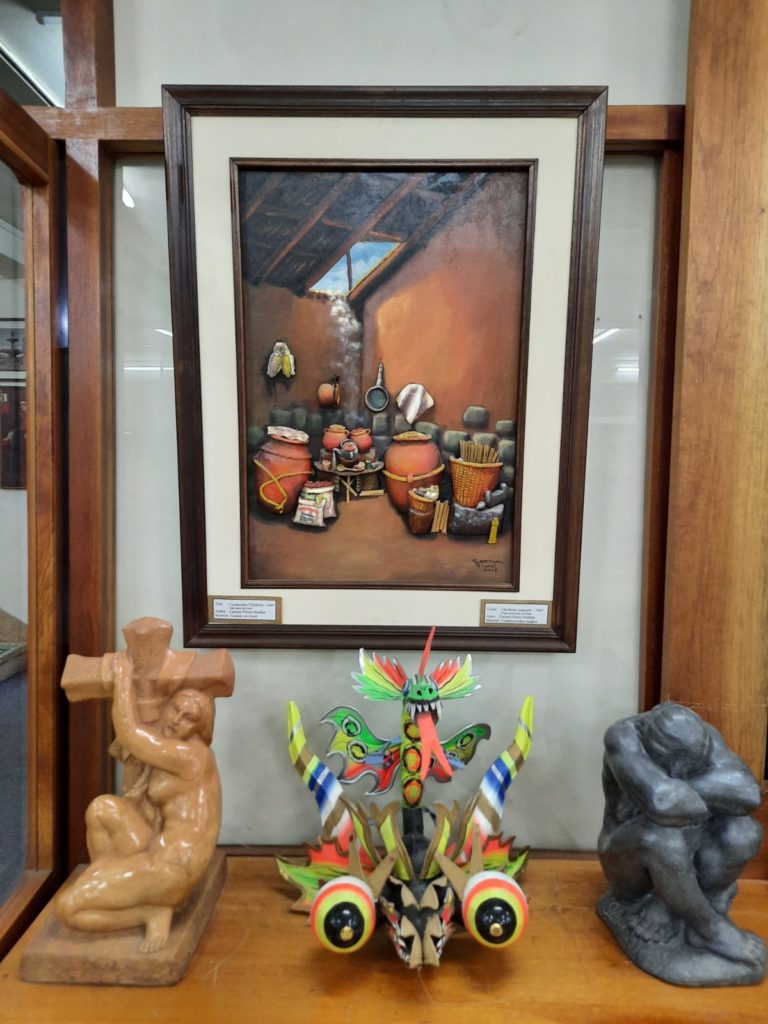
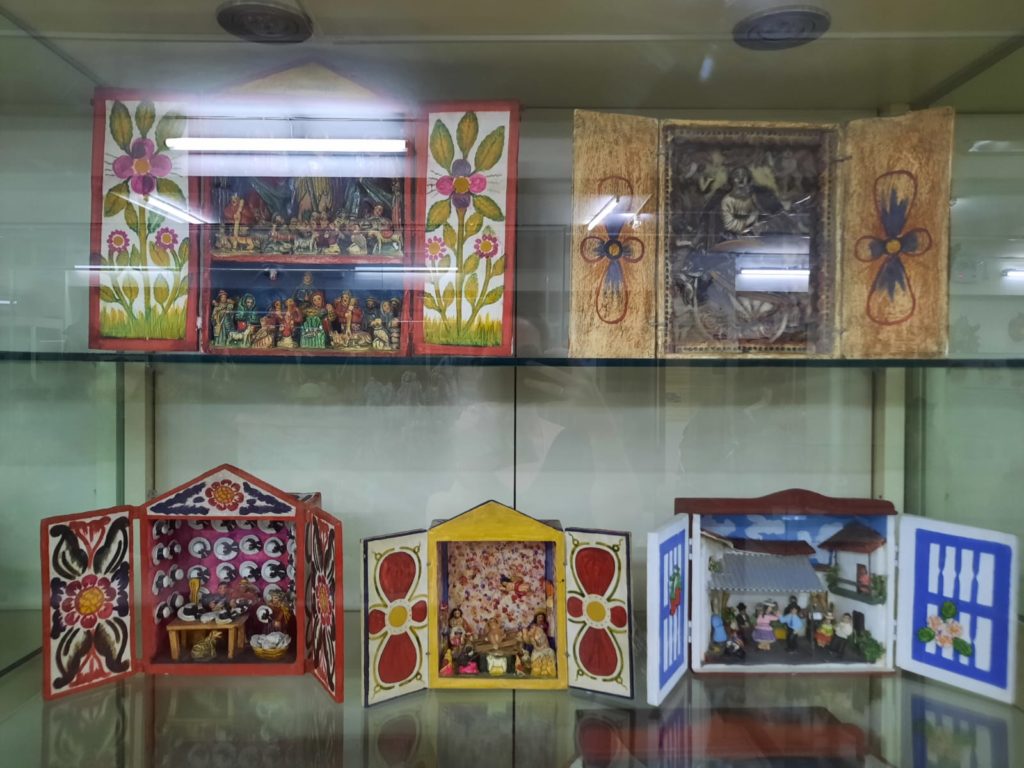
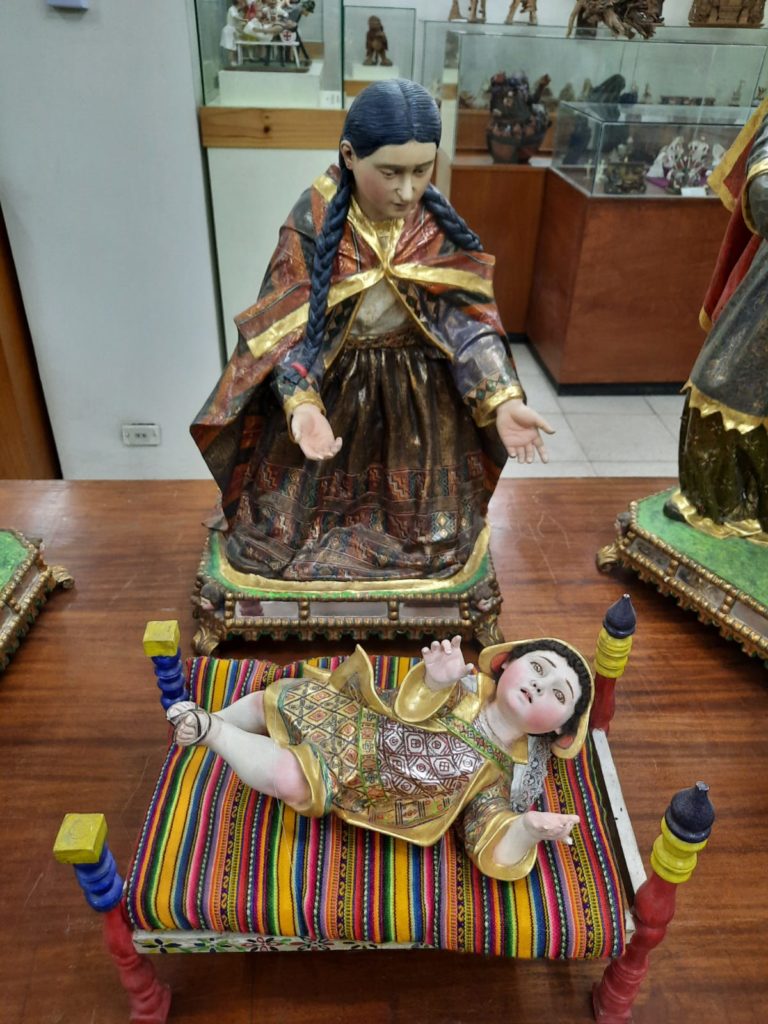
Museo de Arte Popular (Folk Art Museum)
This museum is a bit of an experience. It’s in the basement of a government building, so you have to figure out if you’re in the right place while also fending off people trying to engage you/direct you for a tip (or at least this was my interpretation of what was going on). Once you get inside, this is not a sophisticated museum, but I found it rather charming.
There are two spaces inside the Museo de Arte Popular. There is a room on the left where you watch a video (it gives serious church hall/club room vibes), and then a hall with display cases full of folk art. I couldn’t tell you what their collecting policy is. There are all kinds of subjects, media and periods, although most objects are fairly recent. Some will look like types of objects you’ve seen in local markets, others are more unusual. My advice is to just take it all in and enjoy it as an earnest and enthusiastic undertaking.
When I was researching the boleto turistico, I read this post from 2019 which didn’t give the Museo de Arte Popular a good review, saying the staff were unfriendly and the displays dusty. This wasn’t my experience on either count. I found the lady on duty when I visited to be very friendly, and had a chat with her before dutifully going to watch the video. And no dust in sight. It’s still not for everyone, but I was glad to have seen it thanks to my tourist ticket.
Would I have visited without the boleto turistico? No
Do I recommend it? Only for enthusiasts of kitsch/quaint museums
Popular Art Museum (cuscoperu.com)

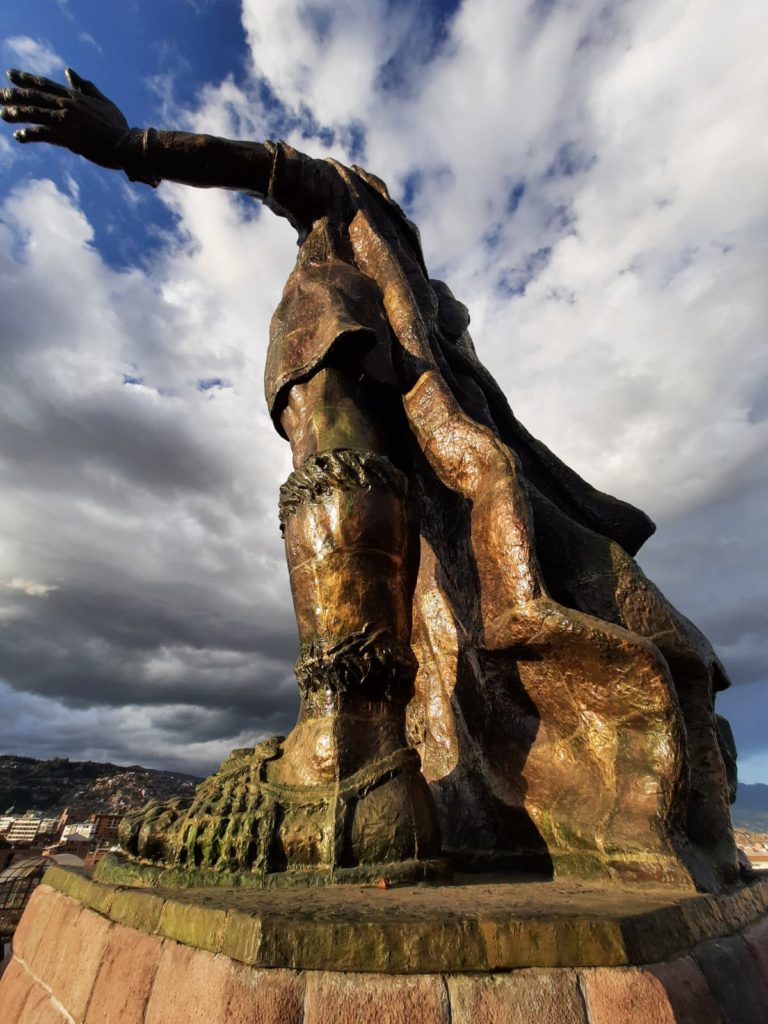
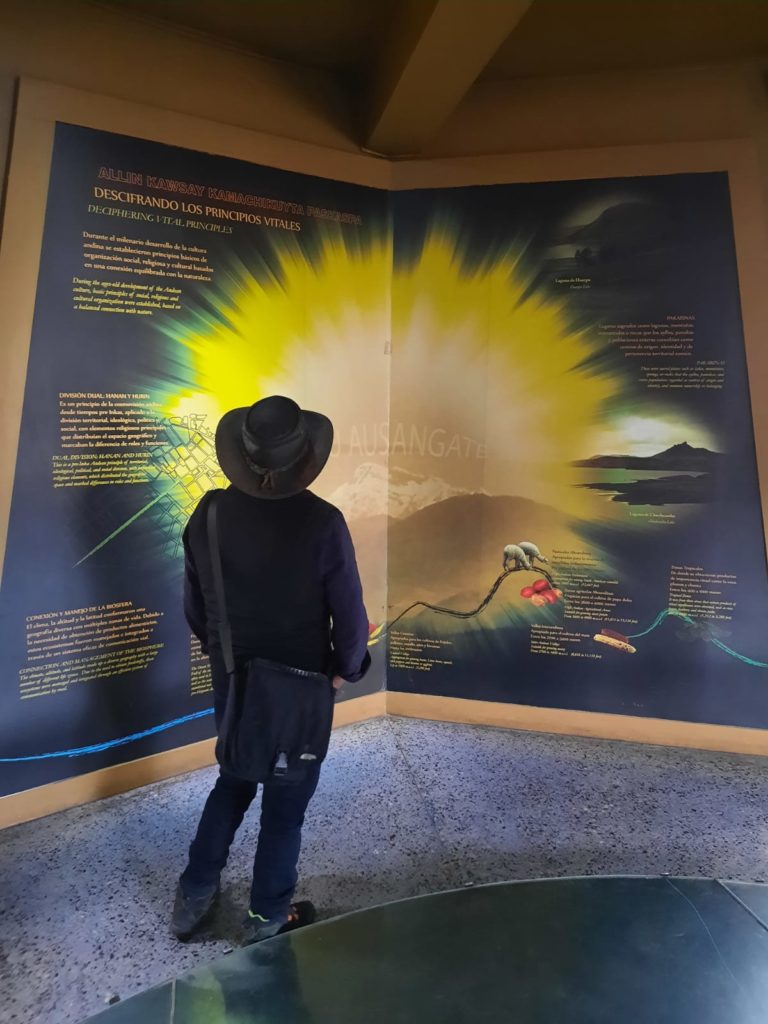

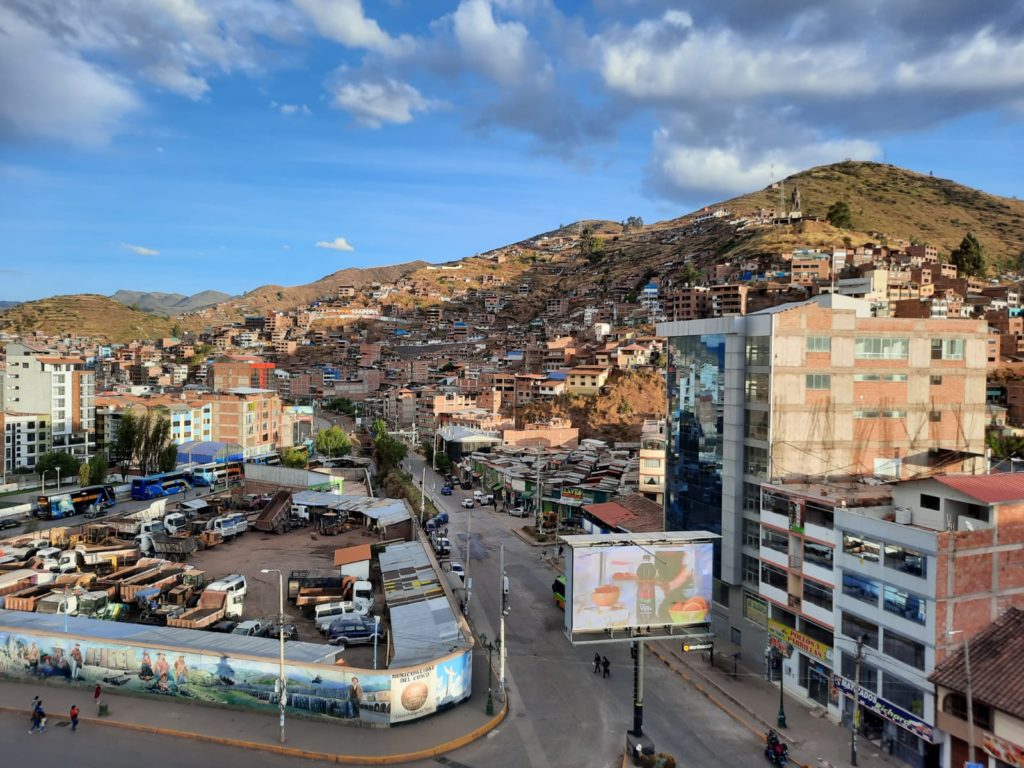

Monumento A Pachacuteq (Monument to Pachacutec)
After starting my day early, overlooking Cusco from the north at Saqsaywaman, as it approached sunset I found myself in the south of the city, heading to the Monument to Pachacutec (also spelled Pachachuteq or Pachacuti). Like the Circuito Mágico del Agua/Magic Water Circuit in Lima, I really enjoyed this because it felt like something locals do; I felt like the only other foreign visitors I saw were also there to get their money’s worth out of their boleto turistico.
Pachacutec was the Inca responsible for transforming the Kingdom of Cusco into the Inca Empire. The Inca territory expanded massively during his reign. He was a strong military leader. But also a sensible town planner and organiser of labour and resources amongst other qualities. Unfortunately, he was such a strong leader (and begetter of sons) that his death caused a succession crisis that weakened the Inca Empire just before the arrival of the Spanish. It’s thus possible that, even without the Conquistadors, Inca power might have been waning once more.
Pachacutec is nonetheless remembered as a great figure from Inca, Quechua and Peruvian history. Many statues commemorate him as well as in this monument. The monument is quite a simple affair – a stone tower with a statue on top. Each level of the tower has information about Pachacutec and his legacy (in Spanish and English). And the views from the top are nice as they offer a different perspective on the city.
Would I have visited without the boleto turistico? No
Do I recommend it? Yes
Pachacuteq Monument, Cusco – The Only Peru Guide
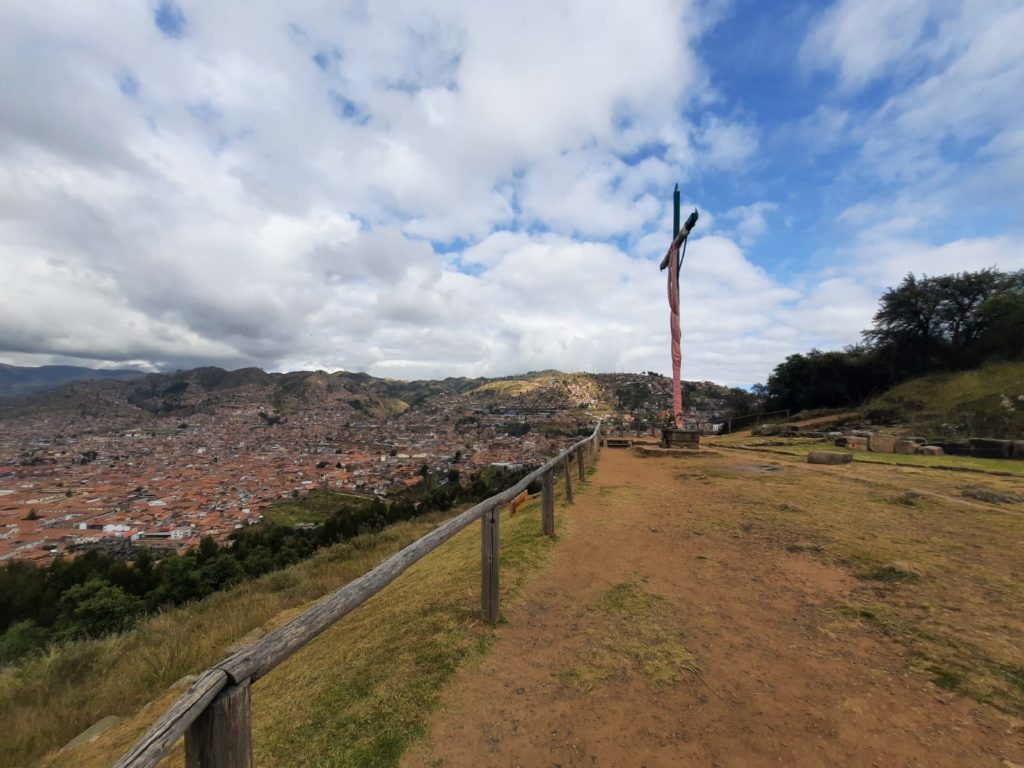
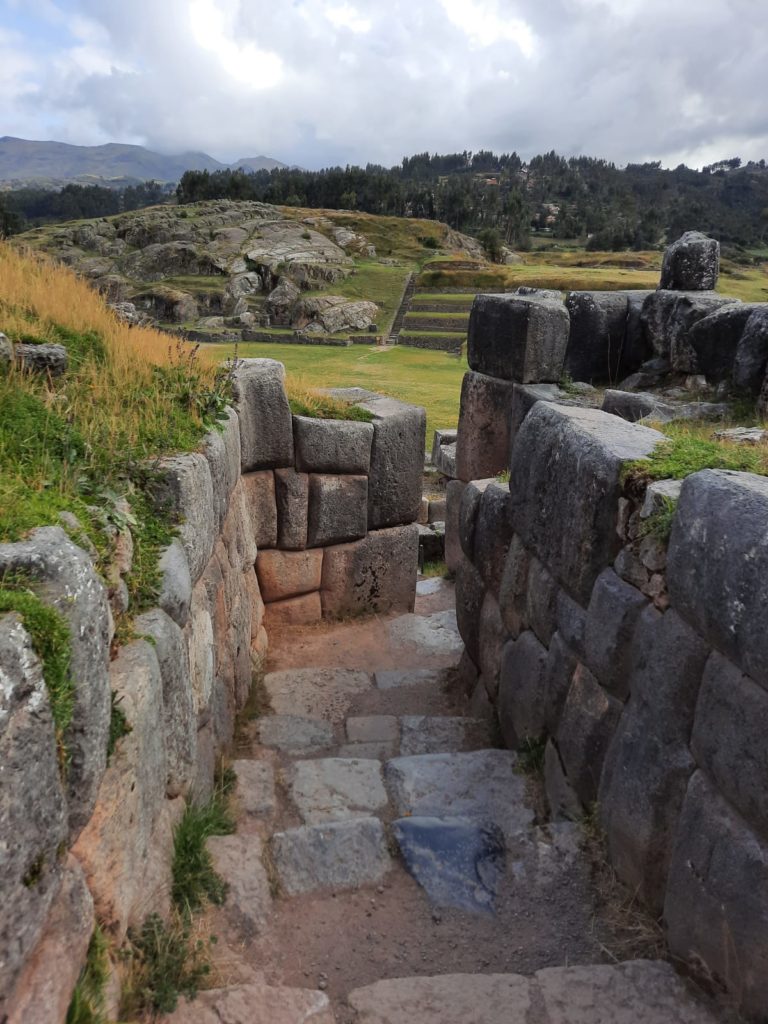


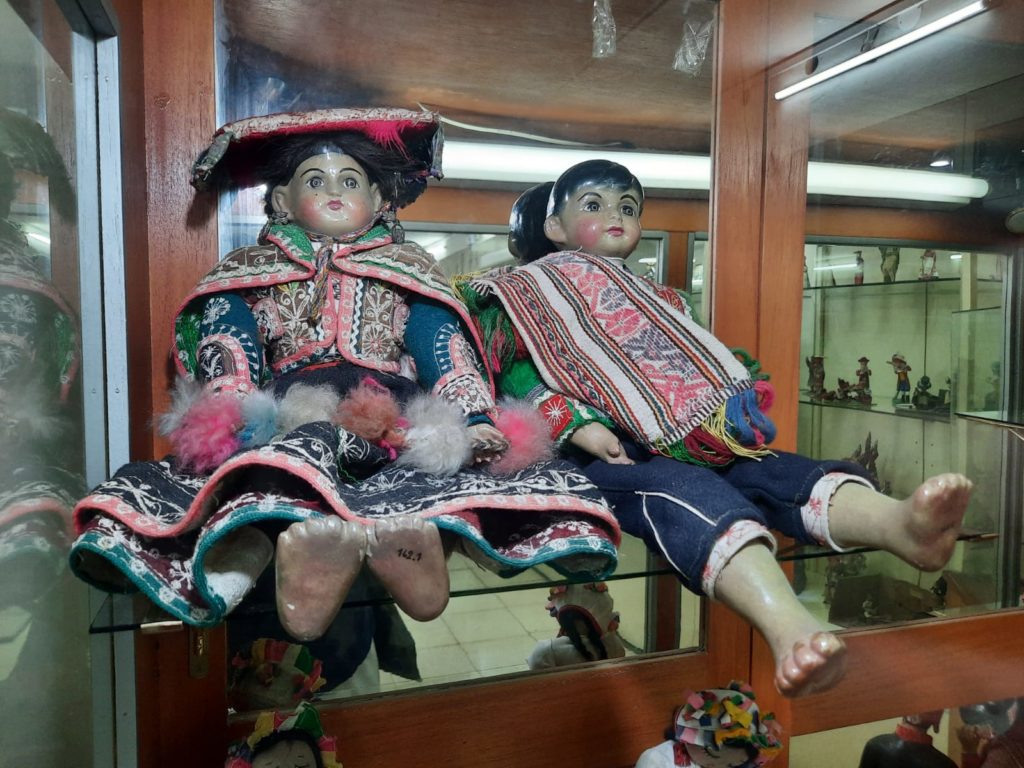

Conclusion: Was The Boleto Turistico Worth It?
In the end, I managed to get to 5 out of 15 in a single day. Not bad going. But was it worth it? Both yes and no, in my opinion.
From a purely financial point of view, I paid a little over the odds to see five tourist attractions. As an aside, I did get very close to seeing a sixth – an evening cultural show at the Centro Qosqo de Arte Nativo. But in the end I decided against it because a) I had to pack, b) I wasn’t sure it was the sort of thing I would enjoy for a long duration and c) I had nothing to prove by going to one more place on the ticket. So five out of fifteen it was; all of which I enjoyed, but some of which I could have had a perfectly nice day in Cusco without.
I have to say though, over the course of one day I crossed Cusco on foot; saw sites ranging from archaeological to modern, from museums to lookouts to Inca ritual altars. Without the boleto turistico, I wouldn’t have had that sort of variety. I also liked that it took the pressure out of decision making once I’d bought it. I mean, it would be silly to just go to Saqsaywaman for a cost of 130 soles. But once I had the ticket, the 130 soles were a sunk cost. Either I made it to lots of sites, or I didn’t. And if I wanted to go to some of those museums that can only be seen on the boleto turistico, I had the option. So I could take the day one step at a time.
This guide to a day on the boleto turistico may have helped you, or it may not. Apologies if you’re in the latter camp. In the end, as I said at the outset, it comes down to a financial decision and looking into any ‘must see’ places to check they’re open. The rest is up to you!
Trending
If you see this after your page is loaded completely, leafletJS files are missing.

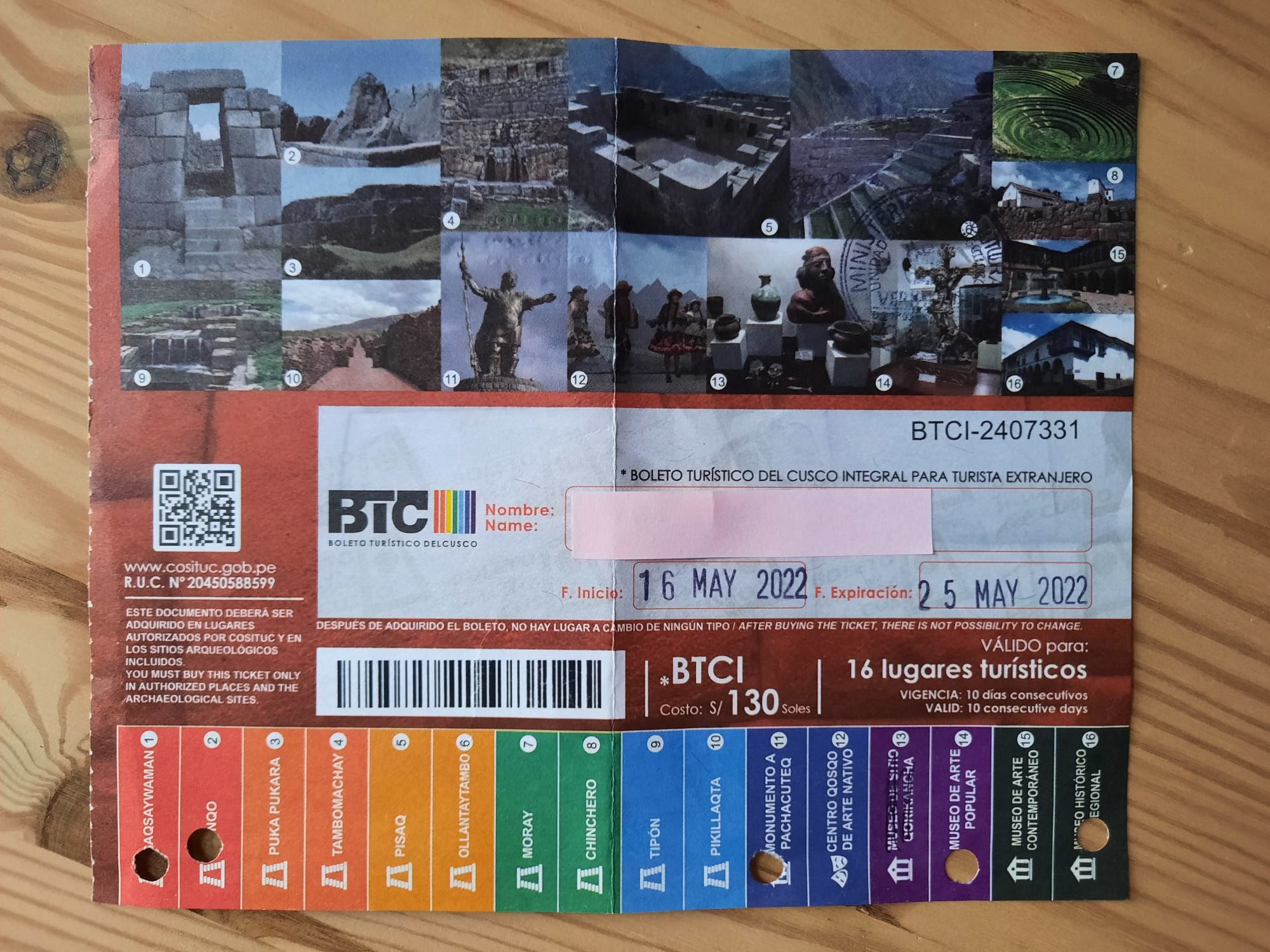
3 thoughts on “Cusco And The Boleto Turistico (Tourist Ticket)”